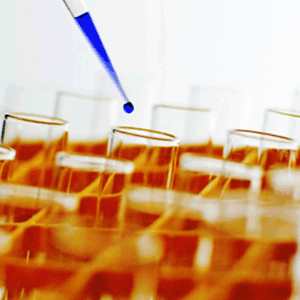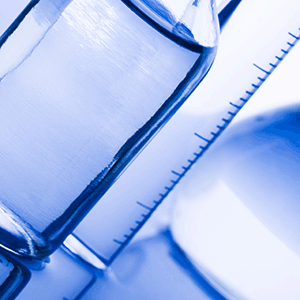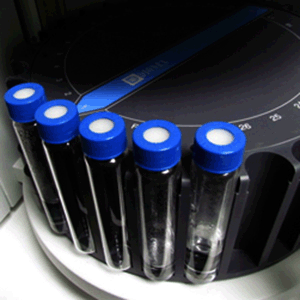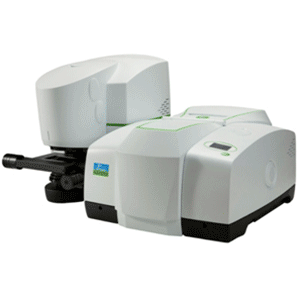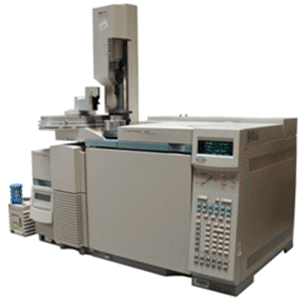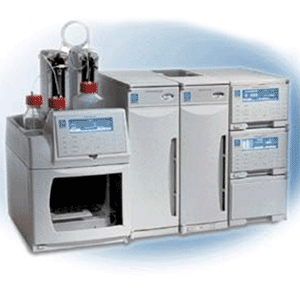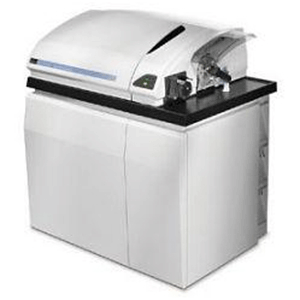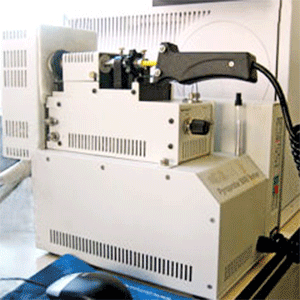
Chemical Testing Services
- Alloy Composition - ICP-MS, XRF, SEM-EDS
- Chemical Resistance - Chemical Testing Applications
- Chromatographic Analysis - GC-MS, Ion Chromatography, ICP-MS
- Cleanliness/Ionic Impurities - Ion Chromatography
- Compatibility - Chemical Testing Applications
- Composition - ICP-MS, XRF, SEM-EDS, FTIR, GC-MS
- Contamination Analysis - ICP-MS, XRF, SEM-EDS, FTIR, GC-MS
- Corrosion - ICP-MS, XRF, SEM-EDS
- Deterioration - ICP-MS, XRF, SEM-EDS, FTIR, GC-MS
- Hazardous Substance Analysis - ICP-MS, XRF, SEM-EDS, FTIR, GC-MS, PY-GC-MS
- Heavy Metals/Lead Content - ICP-MS, XRF, SEM-EDS
- pH - Chemical Testing Applications
- Purity - ICP-MS, XRF, SEM-EDS, FTIR, GC-MS
- Resistivity of Solvent Extract (ROSE) - Chemical Testing Applications
- Restriction of Hazardous Substances (RoHS) - ICP-MS, XRF, SEM-EDS, FTIR, GC-MS
- Water Testing (Drinking and Waste) - ICP-MS, GC-MS
- Chemical Testing Related Standards
Fourier Transform Infared Spectroscopy (FTIR)
FTIR offers quantitative and qualitative analysis for organic and inorganic samples. Fourier Transform Infrared Spectroscopy (FTIR) identifies chemical bonds in a molecule by producing an infrared absorption spectrum. The spectra produce a profile of the sample, a distinctive molecular fingerprint that can be used to screen and scan samples for many different components. FTIR is an effective analytical instrument for detecting functional groups and characterizing covalent bonding information. Sample spectra can be acquired using single bounce ATR, multi-bounce liquid ATR, Diffuse Reflectance, Specular Reflectance or Transmission. The FTIR microscope (or micro-FTIR) is a useful technique for evaluating samples too small for other sampling techniques and provides the ability to create an FTIR spectral map of a non-homogeneous material. The FTIR microscope at Accolade also has Micro-ATR sampling.
Applications:
- Composition
- Deterioration
- Hazardous Substance Analysis
- Purity
- Restriction of Hazardous Substances (RoHS)
- Contamination Analysis
Gas Chromatography Mass Spectrometry (GC-MS)
Gas chromatography–mass spectrometry (GC-MS) is an analytical method that combines the features of gas-liquid chromatography and mass spectrometry to identify different substances within a test sample. Applications of GC-MS include drug detection, environmental analysis, and identification of unknown samples. Additionally, it can identify trace elements in materials that were previously thought to have disintegrated beyond identification. Samples are introduced into the inlet where they are heated and then pushed through a capillary column with high purity helium concurrent with heating of the column. Samples are separated and reach the detector at different times (retention times) to allow identification with the mass spectrometer.
Applications:
- Contamination Analysis
- Chromatographic Analysis
- Composition
- Deterioration
- Phthalate Content
- Purity
- Restriction of Hazardous Substances (RoHS)
- Water Testing (Drinking and Waste)
- Hazardous Substance Analysis
Ion Chromatography (IC)
Ion chromatography is used for water chemistry analysis. Ion chromatographs are able to measure concentrations of major anions, such as fluoride, chloride, nitrate, nitrite, and sulfate, as well as major cations such as lithium, sodium, ammonium, potassium, calcium, and magnesium in the parts-per-billion (ppb) range. Concentrations of organic acids can also be measured through ion chromatography. The principal use for ion chromatography for electronic assembly is to evaluate printed wiring assembly cleanliness. Factory level cleanliness techniques perform global ion extraction and reports equivalent conductivity of sodium chloride even if sodium chloride is not the ionic contaminate. Ion chromatography can have samples with ions extracted locally at rework locations or globally for introduction to the instrument for specific ion identification and concentration reporting.
Applications:
- Chromatographic Analysis
- Cleanliness/Ionic Impurities
Inductively Coupled Plasma with Mass Spectrometry (ICP-MS)/ Laser Ablation ICP-MS (LA-ICP-MS)
Inductively coupled plasma mass spectrometry (ICP-MS) is a type of mass spectrometry which is capable of detecting up to 73 elements of the periodic tables at concentrations as low as 0.1 ppt (part per trillion). Gases and low ionizing elements such as Fluorine are excluded from ICP-MS analysis. The low detection limits of an ICP-MS are achieved by ionizing the sample with inductively coupled Argon plasma and then using a mass spectrometer to separate and quantify those ions. Compared to atomic absorption techniques, ICP-MS has greater speed, precision, and sensitivity. Traditionally, samples require digestion for liquid injection into the ICP-MS spray chamber for introduction to the plasma. Using a Laser Ablation sampling tool, a small spot (25um to 100um) of focused UV laser light removes material from solid or liquid samples and uses high purity helium to carry the material to the argon plasma. Laser ablation eliminates the need for acid digestion when short analysis time with little sample preparation is preferred over the greater accuracy of sample digestion and liquid introduction.
Applications:
- Contamination Analysis
- Printed Circuit Board Analysis
- Water Testing (Drinking and Waste)
- Alloy Composition
- Chromatographic Analysis
- Composition
- Corrosion
- Deterioration
- Hazardous Substance Analysis
- Heavy metals/Lead Content
- Purity
- Restriction of Hazardous Substances (RoHS)
Pyrolysis Gas Chromatography Mass Spectrometry (Pyrolysis GC-MS))
Pyrolysis gas chromatography mass spectrometry (Pyrolysis GC-MS) is an instrumental method that enables a reproducible characterization of the intractable and involatile macromolecular complexes found in virtually all materials in the natural environment. It differs from GC-MS in the type of sample analyzed and the method by which it is introduced to the GC-MS system. Instead of the direct injection of a highly refined organic solution, a few mg (or in the case of materials with a high organic carbon content, mg) of the original natural material (e.g. soil, sediment, vegetation, insect cuticle, hair etc.) is analyzed directly. The analysis is usually preceded by an extraction of the sample with an organic solvent to remove any free, unbound components with a low molecular mass that would otherwise obscure analytical data pertaining to the high molecular mass components of interest. Extracted samples are inserted into a quartz chamber in a pyrolysis unit that is heated quickly in a high purity helium environment at a pre-set temperature for a number of seconds. This results in a heat mediated cleavage of chemical bonds within the macromolecular structures of interest producing a suite of low molecular weight chemical moieties the composition of which is indicative of specific types of macromolecule. This mixture of compounds is then swept onto the analytical column of the GC-MS proceeds as normal.
Applications:
- Analysis of Polymers and Polymer Additives
- Analysis of Adhesives and Paints
- Analysis of Forensic materials
- Analysis of Fibers, Textiles, Paper and Ink
- Analysis of Photocopies, Art Materials and Natural Materials
X-Ray Fluorescence (XRF)
An X-ray fluorescence (XRF) spectrometer is an x-ray instrument used for routine, relatively non-destructive chemical analyses of metals, rocks, minerals, sediments and fluids. AN XRF spectrometer works on an energy-dispersive spectroscopic principles that are similar to the detector used on an electron microscope EDS system. An XRF, however, cannot generally make analyses at the small spot sizes typical of SEM/EDS so it is typically used for non-destructive bulk analyses of larger fractions of materials too large to pass through an electron microscope air lock or samples that are not vacuum compatible. The relative ease and low cost of sample preparation, and the stability and ease of use of x-ray spectrometers make this one of the most widely used methods for analysis of major and trace elements in rocks, minerals, metals and sediment. XRF is a useful tool for non-destructive plating thickness then the plating thickness is too small for metallographic techniques.
Applications:
- Coating Thickness
- Contamination Analysis
- Plating Thickness
- Alloy Composition
- Composition
- Corrosion
- Deterioration
- Purity
- Restriction of Hazardous Substances (RoHS)
Chemical Testing Applications
Accolade Engineering Solutions offers a variety of Chemical Testing Applications services. Contact us today to discuss your testing needs with someone who can provide you with the expert knowledge to determine the right testing solution for you.
Applications:
- Chemical Resistance
- Compatibility
- Density/Specific Gravity
- pH
- Resistivity of Solvent Extract (ROSE)
- Solderability
- And More...
Chemical Testing Related Standards
- ASTM D1622 "Standard Test Method for Apparent Density of Rigid Cellular Plastics"
- ASTM D543 "Standard Practices for Evaluating the Resistance of Plastics to Chemical Reagents"
- IPC/J-STD-006 "Requirements for Electronic Grade Solder Alloys and Fluxed and Non-Fluxed Solid Solders for Electronic Soldering Applications"
- IPC-SM-840 "Qualification and Performance Specification of Permanent Solder Mask"
- IPC-TM-650, Method 2.3.38C "Surface Organic Contaminant Detection Test"
- IPC-TM-650, Method 2.3.42 "Solder Mask – Resistance to Solvents and Cleaning Agents"
- IPC-TM-650, Method 2.3.1.1B "Chemical Cleaning of Metal Clad Laminates"
- IPC-TM-650, Method 2.3.15 "Purity, Copper Foil or Plating"
- IPC-TM-650, Method 2.3.16.1C "Resin Content of Prepeg, by Treated Weight"
- IPC-TM-650, Method 2.3.16.2 "Treated Weight of Prepreg"
- IPC-TM-650, Method 2.3.16B "Resin Content of Prepreg, by Burn-off"
- IPC-TM-650, Method 2.3.17.2B "Resin Flow of “No Flow” Prepreg"
- IPC-TM-650, Method 2.3.17D "Resin Flow Percent of Prepreg"
- IPC-TM-650, Method 2.3.18A "Gel Time, Prepreg Materials"
- IPC-TM-650, Method 2.3.19C "Volatile Content of Prepreg"
- IPC-TM-650, Method 2.3.2 "Chemical Resistance of Flexible Printed Board Materials"
- IPC-TM-650, Method 2.3.25 "Detection and Measurement of Ionizable Surface Contaminants by Resistivity of Solvent Extract"
- IPC-TM-650, Method 2.3.25.1 "Ionic Cleanliness Testing of Bare PWBs"
- IPC-TM-650, Method 2.3.26 "Ionizable Detection of Surface Contaminants (Dynamic Method)"
- IPC-TM-650, Method 2.3.28 "Ionic Analysis of Circuit Boards, Ion Chromatography Method"
- IPC-TM-650, Method 2.3.28.1 "Halide Content of Soldering Fluxes and Pastes"
- IPC-TM-650, Method 2.3.28.2 "Bare Printed Board Cleanliness by Ion Chromatography"
- IPC-TM-650, Method 2.3.30 "Solvent pH Determination in Anhydrous Fluorocarbons Solvents"
- IPC-TM-650, Method 2.3.32 "Flux Induced Corrosion (Copper Mirror Method)"
- IPC-TM-650, Method 2.3.3A "Chemical Resistance of Insulating Materials"
- IPC-TM-650, Method 2.3.4.2A "Chemical Resistance of Laminates, Prepreg and Coated Foil Products, by Solvent Exposure"
- IPC-TM-650, Method 2.3.4.3 "Chemical Resistance of Core Materials to Methylene Chloride"
- IPC-TM-650, Method 2.3.5 "Density, Insulating Material"
- IPC-TM-650, Method 2.3B "Chemical Resistance, Marking Paints and Inks"
- IPC-TM-650, Method 2.6.15 "Corrosion, Flux"
Copyright (c) 2014 accoladeeng.com. All rights reserved. | Design by FreeCSSTemplates.org.

